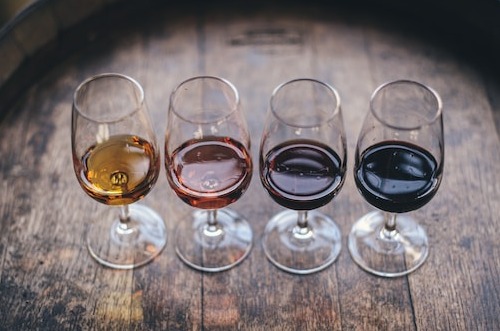
In W34 in the wine landscape, in 2023, Italy's wine production is expected to decrease by 14% year-on-year (YoY), reaching about 4.3 billion liters from 5 billion liters in 2022. This is attributed to the intense heat experienced throughout the country. This could make 2023 one of Italy's worst wine production years in the last century, along with 1948, 2007, and 2017. Meanwhile, France is expected to produce between 4.4 and 4.7 billion liters of wine, securing its position as a leading producer despite the damage caused by drought. Spain is expected to rank third, with an estimated volume of approximately 3.6 billion liters.
From Jan-23 to Jun-23, Portuguese wine exports reached USD 485.27 million, with 158.3 million liters exported at an average price of USD 3.07/liter. Compared to the first half of 2022, there was an increase of 3.4 million liters in export volume, USD 18.21 million in value, and USD 0.05 in average price per liter. This growth is attributed to increased raw material availability and improved external market conditions after the conflict in Ukraine began. Additionally, wines from Portugal's Dão region were exported to more than 70 countries, with substantial volume increases seen in Norway (383%), Poland (369%), and Sweden (48%).
From Apr-23 to Jun-23, wine exports from Chile's O'Higgins Region declined to USD 84.1 million, as reported by the National Institute of Statistics (INE). Red wine constituted the largest share at 64.9% of total exports, followed by white wine at 21%, must at 8.9%, and sparkling wine at 0.9%. Nevertheless, red wine exports experienced a YoY decrease of 20.4%, while must-category exports fell by 56.3% YoY, and others dropped by 36.2% YoY. Additionally, white wine and sparkling wine decreased by 2% and 1%, respectively. Notably, Asia accounted for 37.3% of regional exports, totaling USD 31.4 million, but reflected a significant 37.2% decrease compared to the same period in 2022, primarily due to decreased red wine shipments.
On the contrary, from Jan-23 to Jun-23, Brazilian wine and sparkling wine exports exhibited a 1.7% YoY growth. The export value reached USD 5.78 million, with Uruguay, the United States (US), Paraguay, and China being the primary destinations. Sparkling wines produced using the traditional method saw a 5.4% increase in exports during the first half of 2023 compared to the same period in the previous year. Additionally, exports of sparkling wines made using the Charmat method doubled in value, experiencing a growth of 108%. This category's value surged from USD 114.9 thousand in 2022 to USD 239.3 thousand in 2023, showcasing substantial growth.
On August 20, the "Zero Carbon Demonstration Factory of China Wine Industry" and "Zero Carbon Demonstration Production Area of China Wine Industry" group standard discussion meeting occurred in Fenyang City, Shanxi Province. These standards, initiated by the China Alcohol Industry Association, gained substantial backing from prominent industry enterprises and research institutions. The objective is to unite the industry to pursue a pathway towards dual-carbon development in the wine sector. The standards aim to offer support and guidance for ecologically sound construction and environmentally friendly growth within China's wine industry.


